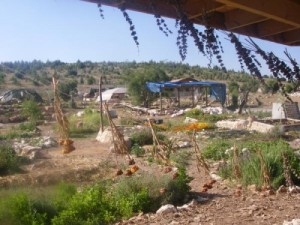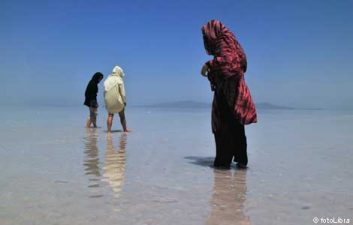The facts are these: Water scarcity is a real and looming threat; while several countries are already below the dreaded 1700 m3 per capita water availability mark, many others are quickly approaching it; most international NGOs have predicted that the worst affected will be those already marginalised, the sick, and the poor, the children and the women.
When discussing the various fallouts of water scarcity, such as its impacts on food security, human health, the global economy and its potential to induce conflict, the one fallout that is rarely discussed is the kind that is suffered by women.
Which is probably why during the discussion of water resources management strategies, women are almost never consulted. And this has proven to be a serious mistake.
As homemakers and caretakers, women, especially rural women, are directly responsible for the water needs of their families. They collect, carry, store and ration out water for their families, and almost always put their own water needs last.
In rural societies across the world, women spend as much as half their day walking to and from water sources, carrying the water themselves for their families.
One of the reasons girl children are often not allowed to go to school is because they are expected to help with the task of ferrying water. In the cases where the women are the sole wage earners for the families, they are even more stressed due to their water collection duties.
If the burden on women due to water stress was even slightly eased, they could potentially have several hours freed up that they could invest in their own future by learning a trade, or spend on caring for their children, or even educating themselves.
Studies even show that women are more affected than men by water-borne diseases; and in cases of natural disasters related to water, such as floods, there are generally higher fatalities among women than men.
Water in rural communities is linked inexorably to land rights, making the management of it an entirely patriarchal exercise, thus women are never allowed to make decisions. Yet, a simple empirical analysis shows us that women are not only the most affected in a water crisis, but they are also the ones with the most amount of first hand information about water sources, and the use of the water itself.
For example, a study found that the time spent by women in certain communities in Nepal on water collection was significantly increased after water facilities were improved. As most of the tap stands and tube wells were located on roadsides to enable ease of access, women had to carry water several miles away in order to bathe and wash, since they could not do it in public view.
Instead of easing their burdens, and making the process of water collection less time consuming, the new facilities did just the opposite, all because women were not consulted when the planning process took place.
Apart from increasing efficacy and results of water management, including women in the decision making and planning processes would significantly empower them.
An example of this is in Pakistan, where the Pakistan Water Partnership (PWP) and Pakistan’s Women’s Water Networks worked together from 2000 to 2002 through gender training and strategic actions, included women across all levels, from the grassroots to the national level, in the water management process.
Through this partnership, women in rural areas have been assisted in times of drought so that they can take leadership roles in drought management strategies.
By involving women in all levels of water management, a number of things are acknowledged, such as the fact that they are the primary caregivers in their families, that they are responsible for their family’s health, and that they are the world’s principal food producers and providers.
All of these various aspects of the traditional woman’s role are intricately linked with water and their control over it. Increasing the control that women have over water will prove to be beneficial for all, the governments which seek to reduce water stress and increase water use efficiency, the families of the women that will have more time with their primary caregiver, the communities which will not only see better water management, but will also have empowered women who can more effectively contribute to their families, communities and most importantly, to themselves.
In review, the facts are these: In order to conserve water, and minimise water stress, the best way forward would be to employ effective and frugal water management strategies; women, in their role as the focal point of water management in their families and their communities, have first hand knowledge of how the water is used, where the requirements are, and what tools are imperative in order to be more efficient.
In placing these two facts together in context, it is evident that the best results will be possible only with the inclusion of women as key decision makers in water management strategies.
Anumita Raj is currently a research analyst at Strategic Foresight Group, a political think tank based in Mumbai – India. [image via anitzsche]
More on water, women and justice:
- Lifesource: Working for Water Justice in Israel and Palestine
- Water Planning, Problems and Propositions For Palestinians
- The Bedouin Ladies of Lakia Weave Together Women and Tradition
- Canadian Organization Introduces Household Grey Water Recycling System for the Middle East
- The Conflicted Middle East To Worsen As Global Warming Causes Rising Sea Levels





4 thoughts on “Look to Women To Curb Middle East Water Problems”
Comments are closed.